Lesson 8
Reasoning about Solving Equations (Part 2)
Let’s use hangers to understand two different ways of solving equations with parentheses.
8.1: Equivalent to $2(x+3)$
Select all the expressions equivalent to \(2(x+3)\).
- \(2 \boldcdot (x+3) \)
- \((x + 3)2 \)
- \(2 \boldcdot x + 2 \boldcdot 3\)
- \(2 \boldcdot x + 3 \)
- \((2 \boldcdot x) + 3\)
- \((2 + x)3\)
8.2: Either Or
-
Explain why either of these equations could represent this hanger:

\(14=2(x+3)\) or \(14=2x+6\)
- Find the weight of one circle. Be prepared to explain your reasoning.
8.3: Use Hangers to Understand Equation Solving, Again
Here are some balanced hangers. Each piece is labeled with its weight.
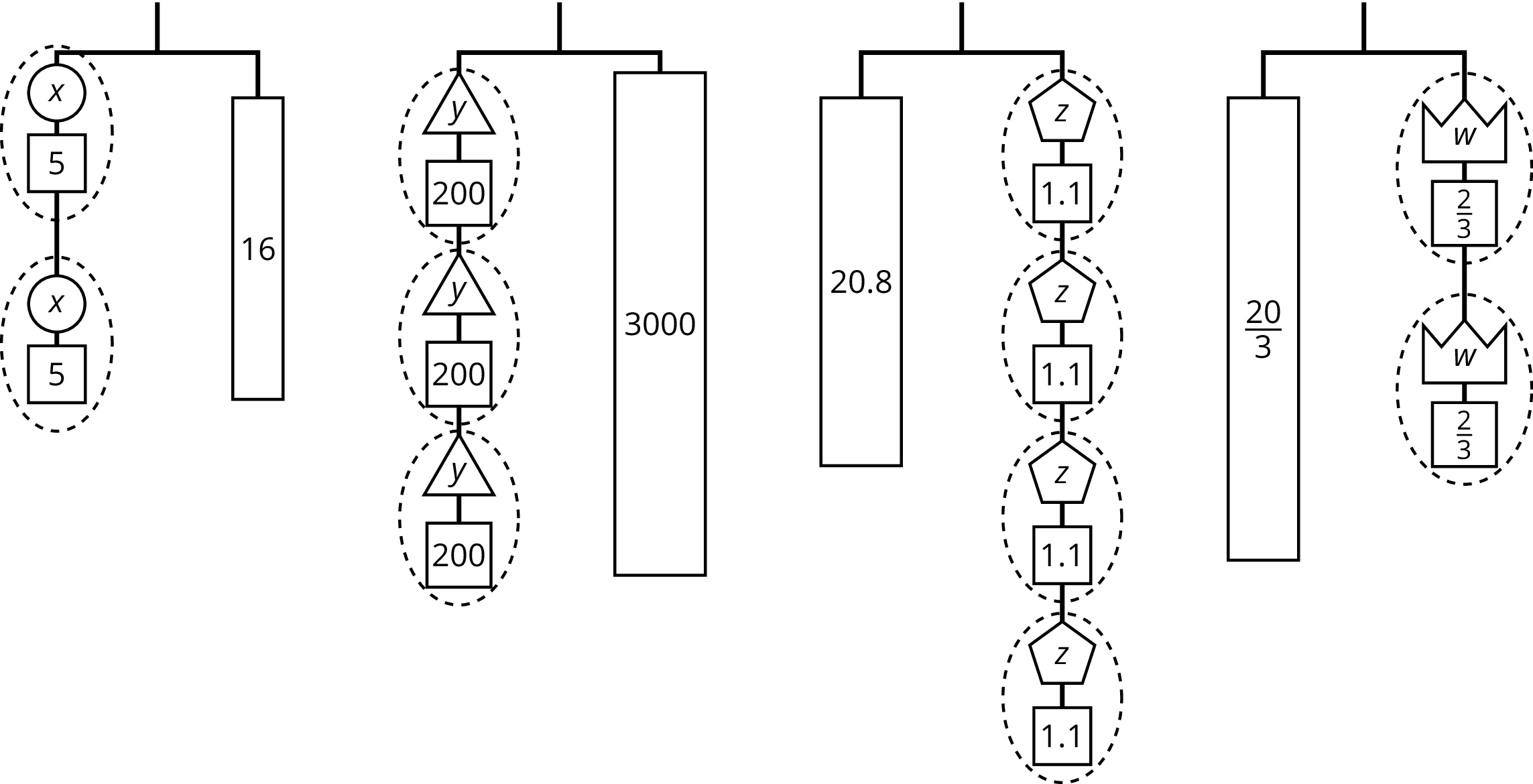
For each diagram:
- Assign one of these equations to each hanger:
\(2(x+5)=16\)
\(3(y+200)=3\!,000\)
\(20.8=4(z+1.1)\)
\(\frac{20}{3}=2\left(w+\frac23\right)\)
- Explain how to figure out the weight of a piece labeled with a letter by reasoning about the diagram.
- Explain how to figure out the weight of a piece labeled with a letter by reasoning about the equation.
Summary
The balanced hanger shows 3 equal, unknown weights and 3 2-unit weights on the left and an 18-unit weight on the right.
There are 3 unknown weights plus 6 units of weight on the left. We could represent this balanced hanger with an equation and solve the equation the same way we did before.
\(\begin {align} 3x+6&=18 \\ 3x&=12 \\ x&=4 \\ \end{align}\)
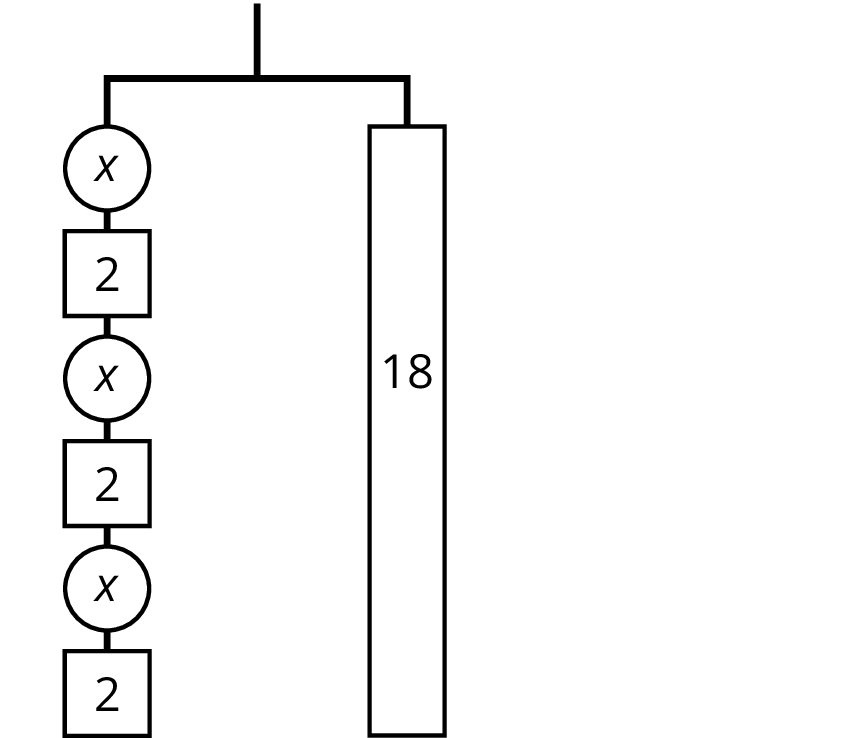
Since there are 3 groups of \(x+2\) on the left, we could represent this hanger with a different equation: \(3(x+2)=18\).
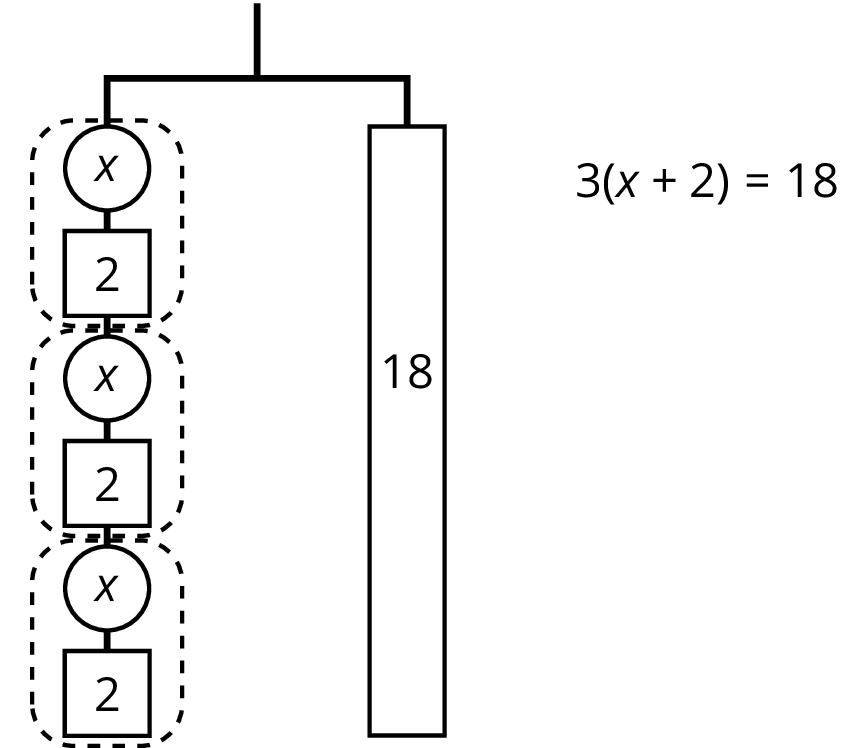
The two sides of the hanger balance with these weights: 3 groups of \(x+2\) on one side, and 18, or 3 groups of 6, on the other side.
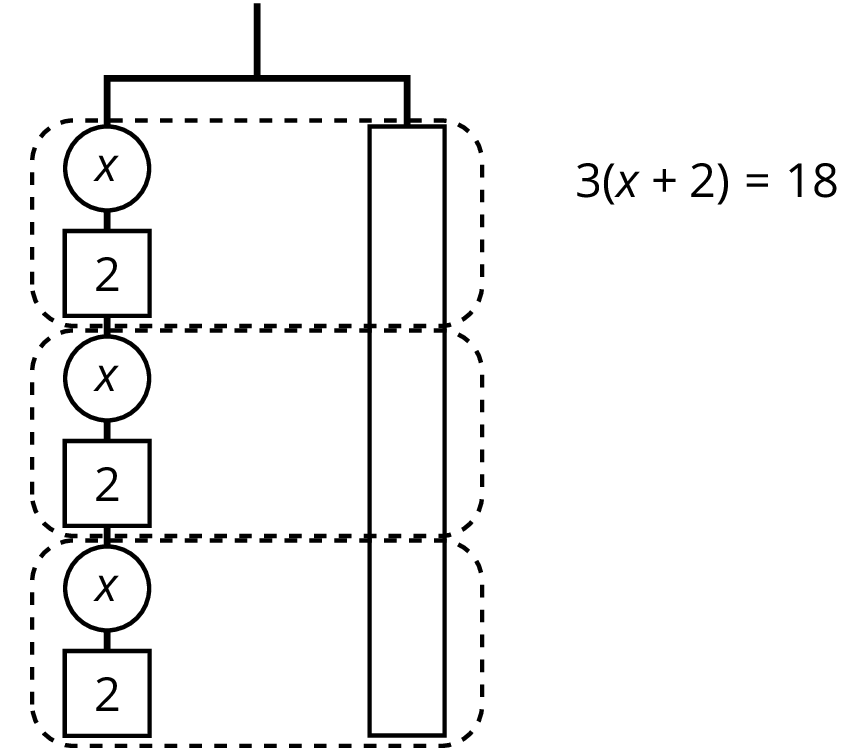
The two sides of the hanger will balance with \(\frac13\) of the weight on each side: \(\frac13 \boldcdot 3(x+2) = \frac13 \boldcdot 18\).
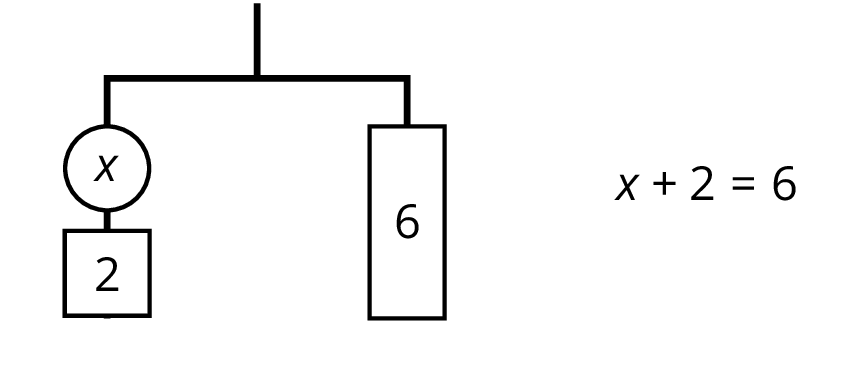
We can remove 2 units of weight from each side, and the hanger will stay balanced. This is the same as subtracting 2 from each side of the equation.
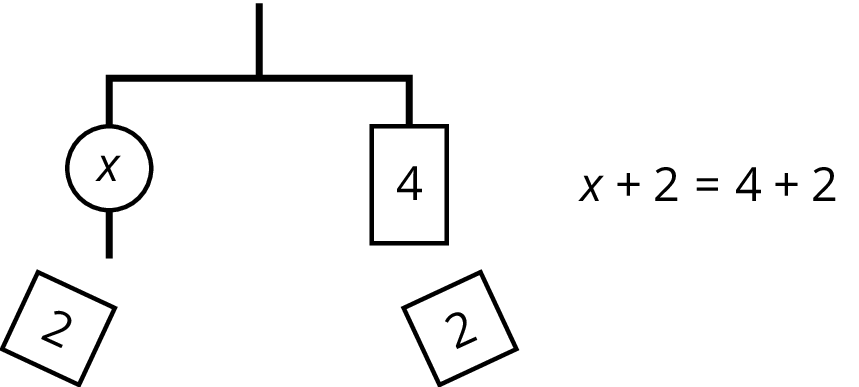
An equation for the new balanced hanger is \(x=4\). This gives the solution to the original equation.

Here is a concise way to write the steps above:
\(\begin{align} 3(x+2) &= 18 \\ x + 2 &= 6 & \text{after multiplying each side by } \tfrac13 \\ x &= 4 & \text{after subtracting 2 from each side} \\ \end{align} \)